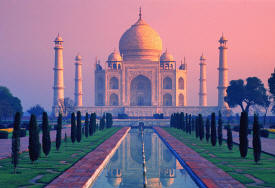Pakistan moving closer to China: CRS
Press Trust Of India
Washington, October 28, 2011
With deepening of India-US relationship and deterioration in the ties between Washington and Islamabad, Pakistan is moving closer to China, a Congressional report has said. "As US-India ties deepen and US-Pakistan ties appear to deteriorate, many observers see Islamabad becoming more reliant than ever on its friendship with Beijing," said the latest report on Pakistan by the independent Congressional Research Service.
"US-Pakistan acrimony in the wake of OBL's death appears to have increased Pakistan's reliance on China as a key international ally.
"Pakistani leaders have become notably more and perhaps overly effusive in their expressions of closeness with China in 2011," it said.
Prime Minister Yousaf Raza Gilani's visit to China in May elicited no major new embrace from Beijing, but the Chinese government did insist that the West "must respect" Pakistan's sovereignty, the report said.
China also agreed to expedite delivery to Pakistan of 50 JF-17 fighter jets equipped with upgraded avionics (Islamabad is also negotiating with Beijing for the purchase of six new submarines for as much as $3 billion in what would be the largest-ever bilateral defense purchase.
"The Islamabad government suffered some embarrassment when its defense minister, upon returning from the same trip, claimed that the Chinese would assume control of the deep-water port at Gwadar that it had helped to build and, further, that Beijing would convert the port for military use," the CRS said adding that the Chinese Foreign Ministry expressed having no knowledge of the purported plans.
According to the CRS there were concerns among some in Congress and independent analysts that wreckage from a previously unseen "stealth" helicopter used by US Special Forces in the Osama bin Laden raid would be examined by Chinese officials, potentially providing them with valuable intelligence on secret US military technology.
"Beijing apparently did express interest in examining the wreckage and, despite Pakistani assurances that no Chinese officials had been given access to it, US intelligence sources reportedly believe that Chinese military engineers were, in fact, given access to the wreckage before it was returned to US custody," it said.
Pakistan appeared to react quickly and with purpose in August when Beijing publicly blamed Islamist militants trained in Pakistan for terrorist activities in China's western Xinjiang province, the report said.
"ISI director Pasha was dispatched to Beijing with the apparent aim of assuaging China. Yet Beijing's willingness to take Islamabad more fully under its wings appears limited.
"The hesitation is rooted at least partly in China's concerns about the rise of Islamist extremism in Pakistan and some disappointment with progress in developing the Gwadar port, which suffers from a poor road network and geographical isolation," it said.
The Chinese government is unlikely to place itself in the middle of any US-Pakistani rift, nor has it shown any desire to replace Washington as Islamabad's primary foreign benefactor, the report said.
Nguồn: Hindustan Times,
http://www.hindustantimes.com/world-news/Americas/Pakistan-moving-closer-to-China-CRS/Article1-762017.aspx


